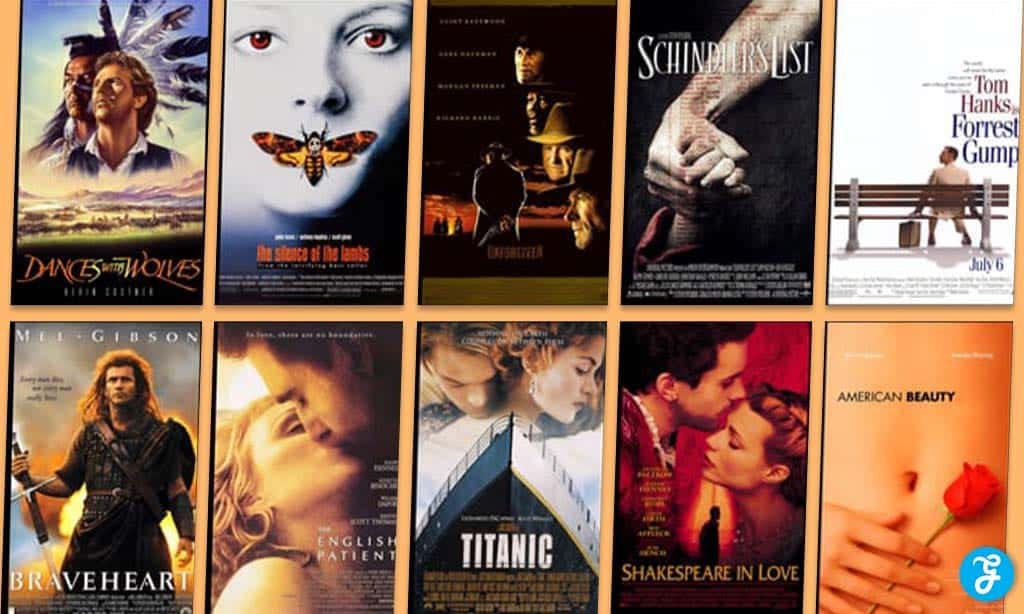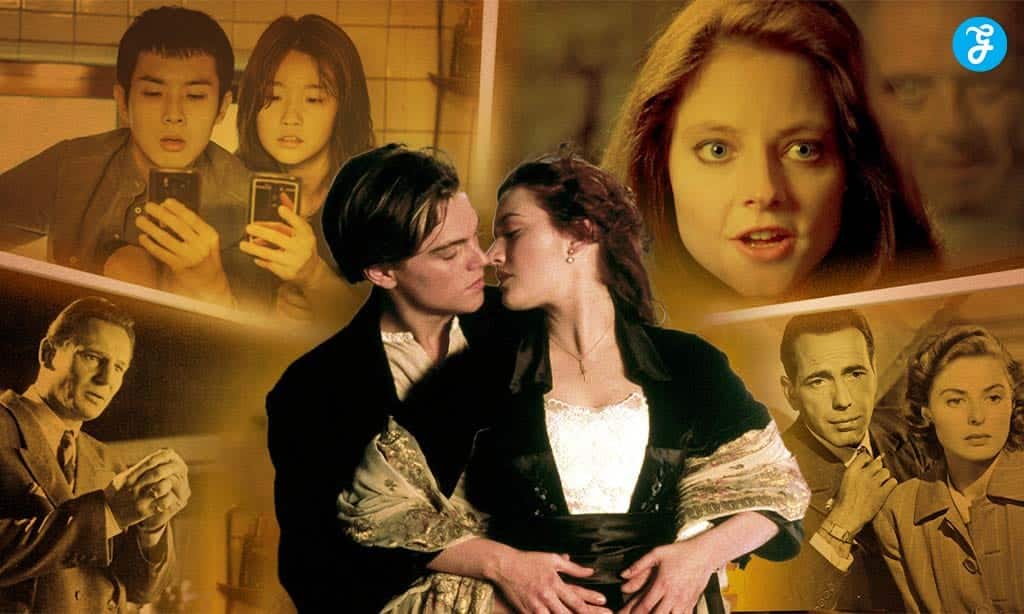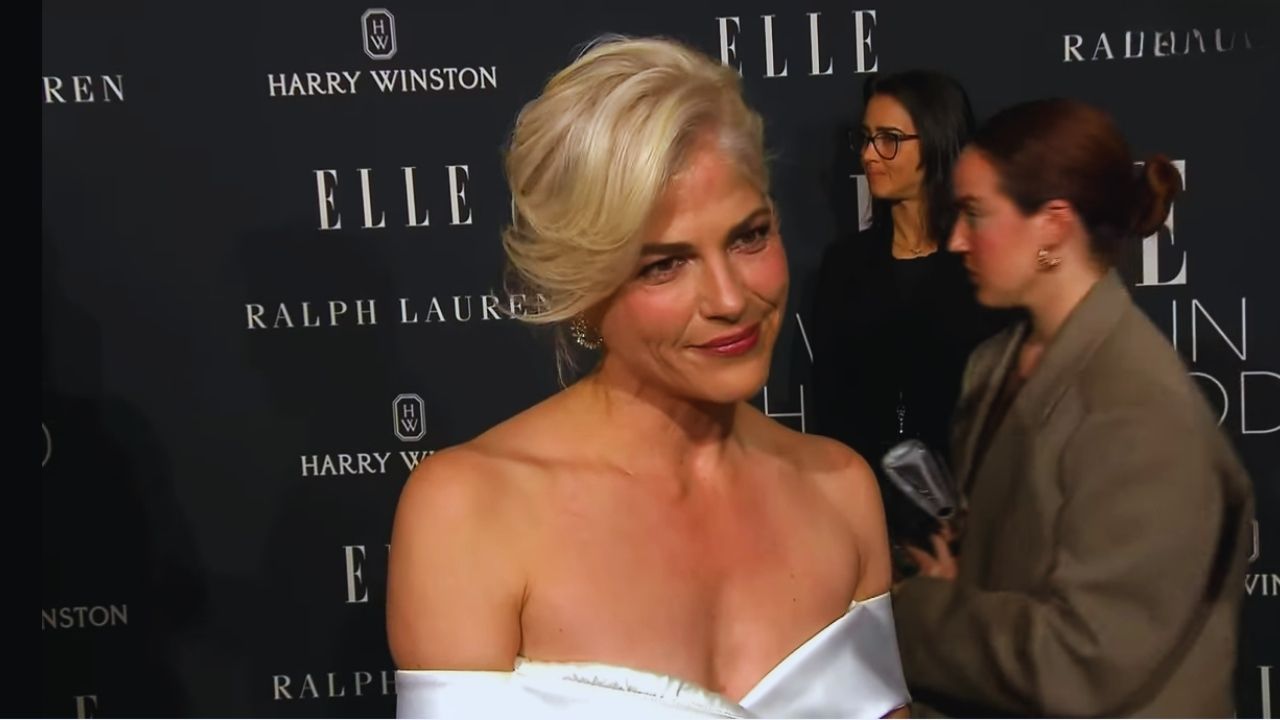Since 1929, the Academy Award for Best Picture has been the ultimate accolade in the world of film, recognizing movies that entertain and push the boundaries of storytelling, technical innovation, and artistic expression. These winners form a tapestry of cinematic history, each thread representing a unique moment in time, a reflection of society, or a leap forward in filmmaking.
We explored 15 must-watch Best Picture winners and journeyed through nearly a century of cinema. From the golden age of Hollywood to the digital era, from war-torn Europe to the streets of modern-day Seoul, these films represent the pinnacle of cinematic achievement. They have made us laugh, cry, think, and feel in ways that only great art can.
As we delve into each of these cinematic treasures, we’ll uncover the stories behind their creation, their impact upon release, and why they continue to resonate with audiences today.
We’ll explore the cultural contexts that shaped them and the legacies they’ve left behind. Whether you’re a seasoned cinephile or a casual moviegoer, these films offer a masterclass in storytelling, acting, and the technical craft of filmmaking.
So, dim the lights, silence your phones, and prepare to be transported. From the smoky corners of Rick’s Café Américain to the neon-lit streets of Seoul, from the depths of a mental institution to the heights of Middle-earth, these 15 Best Picture winners aren’t just great movies—they’re gateways to new worlds, new ideas, and new ways of seeing. Let’s begin our cinematic odyssey through the best of the best.
The Must-Watch List
1. “The Godfather” (1972)
Francis Ford Coppola’s “The Godfather” isn’t just a film; it’s a cultural phenomenon that redefined the gangster genre and American cinema. Based on Mario Puzo’s bestselling novel, the film chronicles the Corleone family’s rise in organized crime, focusing on Michael Corleone’s transformation from a reluctant outsider to a ruthless mafia boss.
At its core, “The Godfather” is a family saga exploring themes of loyalty, power, and the American Dream. Coppola’s masterful direction presents a complex moral universe where family loyalty clashes with brutal necessity.
Al Pacino’s nuanced portrayal of Michael Corleone exemplifies the film’s rich character development. Pacino’s performance is a subtle study as we watch Michael’s gradual descent into darkness, his eyes growing colder with each scene.
Marlon Brando’s portrayal of Don Vito Corleone is nothing short of iconic. His mumbling delivery and cat-stroking mannerisms have become so deeply ingrained in popular culture that they’re instantly recognizable even to those who haven’t seen the film. Brando’s performance is a masterclass in understated power, conveying volumes with a whisper or a glance.
Cinematographer Gordon Willis earned the nickname “The Prince of Darkness” for his work on this film. His use of shadows and low-key lighting set a new standard for cinematography, creating a visual style that perfectly captures the film’s moral ambiguity and hidden power themes.
The film’s influence extends far beyond its performances and visual style. Its exploration of the immigrant experience and the dark side of the American Dream has inspired countless filmmakers and writers. The movie’s quotable dialogue (“I’m gonna make him an offer he can’t refuse”) has entered the lexicon of popular culture.
“The Godfather” won three Academy Awards, including Best Picture, Best Actor for Brando, and Best Adapted Screenplay. It spawned two sequels, with “The Godfather Part II” also winning Best Picture in 1974 – a feat unmatched until “The Lord of the Rings” trilogy. More than just a great film, “The Godfather” is a cultural touchstone that continues to influence and inspire nearly five decades after its release.
2. “Casablanca” (1943)
“Of all the gin joints in all the towns in all the world, she walks into mine.” With lines like these, “Casablanca” has become the epitome of classic Hollywood cinema. This World War II-set wartime romance, which Michael Curtiz directed, is the ideal fusion of a love story, political thriller, and character study.
The film stars Humphrey Bogart as Rick Blaine, a cynical American expatriate running a nightclub in Casablanca, and Ingrid Bergman as Ilsa Lund, the woman who broke his heart. When Ilsa arrives in Casablanca with her husband, Victor Laszlo, a renowned resistance leader, Rick must choose between his love for Ilsa and helping the couple escape the Nazis.
What makes “Casablanca” timeless is its perfect balance of elements. The central love story between Rick and Ilsa is romantic and heartbreaking, with Bogart and Bergman’s chemistry creating one of cinema’s most memorable couples.
But the film is much more than a love story. It’s a tale of sacrifice and redemption as Rick moves from cynical isolationism (“I stick my neck out for nobody”) to active engagement in the fight against fascism.
The supporting cast is equally stellar. Claude Rains as the charmingly corrupt Captain Renault, Paul Henreid as the noble Victor Laszlo, and Dooley Wilson as Sam, Rick’s loyal friend and pianist, create memorable characters contributing to the film’s rich tapestry.
“Casablanca” is also a masterclass in screenwriting. The twin brothers Julius and Philip Epstein and Howard Koch wrote the script, which is full of lines that have become part of popular culture. From “We’ll Always Have Paris” to “I think this is the beginning of a beautiful friendship,” the film has given us some of cinema’s most enduring phrases.
Visually, the film perfectly captures wartime Casablanca’s exotic, dangerous atmosphere. The use of light and shadow, particularly in Rick’s Café Américain, creates a mood of romance and intrigue that has been often imitated but rarely matched.
“Casablanca” won three Academy Awards, including Best Picture, Best Director, and Best Adapted Screenplay. Its influence on popular culture is immeasurable, with references and homages appearing in countless films, TV shows, and other media over the decades. More than just a great movie, “Casablanca” is a cultural artifact that continues to captivate audiences with its timeless story of love, sacrifice, and doing the right thing.
3. “Schindler’s List” (1993)
Steven Spielberg’s “Schindler’s List” is one of the most influential films ever made about the Holocaust. Based on the true story of Oskar Schindler, a German businessman who saved the lives of more than a thousand Jewish refugees during the Holocaust, the film is a stark and unflinching look at one of history’s darkest periods.
Spielberg, known primarily for his blockbuster entertainment, radically departed with “Schindler’s List.” Shot primarily in black and white, with only a few symbolic uses of color (most notably the girl in the red coat), the film’s visual style emphasizes the bleakness of its subject matter. Spielberg’s decision to shoot much of the film with handheld cameras gives it a documentary-like feel, increasing its emotional impact and immediacy.
Liam Neeson delivers a career-defining performance as Oskar Schindler, portraying his transformation from a war profiteer to a man risking everything to save lives. Neeson’s Schindler is complex and flawed, making his eventual heroism all the more powerful.
Ben Kingsley, as Itzhak Stern, Schindler’s Jewish accountant, provides the moral center of the film, while Ralph Fiennes gives a chilling performance as Amon Göth, the sadistic Nazi officer.
What sets “Schindler’s List” apart is its ability to find moments of hope and humanity amidst unimaginable horror. The film doesn’t shy away from depicting the brutalities of the Holocaust, with scenes in the Kraków Ghetto and Auschwitz-Birkenau that are almost unbearable to watch. Yet it also celebrates the courage of those who resisted and the resilience of the human spirit.
Itzhak Perlman performs violin solos in the film’s sparse and melancholy John Williams score. Its simple, mournful melody, the central theme, y, has become one of the most recognizable pieces of film music.
Schindler’s List” won seven Academy Awards, including Best Picture, Best Director for Spielberg, and Best Adapted Screenplay. Its impact extended beyond cinema, sparking renewed interest in Holocaust education and the preservation of survivors’ stories.
The Shoah Foundation, established by Spielberg in the wake of the film, has recorded over 55,000 video testimonies of Holocaust survivors.
More than just a film, “Schindler’s List” is a powerful historical document and a reminder of both the depths of human cruelty and the heights of human compassion. It remains a testament to the power of individual action in the face of systemic evil.
4. “The Silence of the Lambs” (1991)
Jonathan Demme’s psychological thriller “The Silence of the Lambs” broke new ground by becoming only the third film in history to win all five major Academy Awards (Best Picture, Director, Actor, Actress, and Screenplay).
Based on Thomas Harris’s novel, the film follows FBI trainee Clarice Starling as she seeks the help of imprisoned cannibal Dr. Hannibal Lecter to catch another serial killer, “Buffalo Bill.”
What elevates “The Silence of the Lambs” above typical thriller fare is its exploration of complex themes. The film delves into gender dynamics, the nature of evil, and the psychological toll of confronting darkness. Clarice’s journey is not just about catching a killer but also about navigating a male-dominated world and confronting her inner demons.
Jodie Foster’s portrayal of Clarice Starling is a masterclass in acting. She brings depth and vulnerability to the role, creating a heroine who is both strong and deeply human. Her West Virginia accent and determined demeanor make Clarice feel authentic and relatable, even as she faces unimaginable horrors.
Despite having only 16 minutes of screen time, Anthony Hopkins creates one of cinema’s most memorable villains in Hannibal Lecter. His performance is chilling, charismatic, and utterly unforgettable.
Hopkins imbues Lecter with a cold intelligence and refined menace, making him both terrifying and fascinating. The scenes between Starling and Lecter crackle with tension, their verbal sparring matches becoming the film’s heart.
The film’s tight screenplay, which Ted Tally adapted, keeps audiences on the edge of their seats while offering in-depth character development. Demme’s direction creates an atmosphere of unrelenting tension, using close-ups and point-of-view shots to heighten the psychological intensity.
The film’s climactic night-vision sequence, where Clarice confronts Buffalo Bill in total darkness, is a masterpiece of suspense.
The Silence of the Lambs” had a significant cultural impact, influencing countless thrillers and crime dramas. It sparked a renewed interest in psychological profiling and forensic science, and its characters have become iconic in popular culture. The film’s success also paved the way for more complex, female-driven narratives in Hollywood.
More than just a thriller, “The Silence of the Lambs” is a psychological drama exploring evil’s nature and the strength required to confront it. It remains a benchmark in the genre, a film that continues to chill and captivate audiences decades after its release.
5. “One Flew Over the Cuckoo’s Nest” (1975)
Milos Forman’s adaptation of Ken Kesey’s novel “One Flew Over the Cuckoo’s Nest” is a powerful exploration of individuality, authority, and the human spirit. Set in a mental institution, the film stars Jack Nicholson as Randle McMurphy, a criminal who feigns insanity to serve his prison sentence in a psychiatric hospital.
What makes “One Flew Over the Cuckoo’s Nest” stand out is its nuanced portrayal of mental illness and institutional power. The film challenges viewers to question the line between sanity and insanity and the often arbitrary nature of societal norms.
Through McMurphy’s rebellious antics and his effect on the other patients, the film critiques the dehumanizing aspects of institutional care and celebrates the power of human connection.
Jack Nicholson’s performance as McMurphy is nothing short of iconic. He brings a manic energy and charisma to the role, making McMurphy’s rebellion against the system entertaining and profoundly moving. Even as the system closes in on him, Nicholson’s McMurphy is a force of nature and a free spirit who refuses to submit.
Louise Fletcher’s portrayal of Nurse Ratched, the film’s antagonist, is equally powerful. Her calm, controlled demeanor masks a ruthless authoritarianism, creating one of cinema’s most memorable villains. Fletcher’s performance is a study of restrained malevolence, making Nurse Ratched all the more terrifying for her outward reasonableness.
The film’s supporting cast, including Brad Dourif as the stuttering Billy Bibbit and Will Sampson as the silent Chief Bromden, bring depth and humanity to their roles, painting a vivid picture of life inside the institution. Each character is richly drawn, their struggles and small triumphs adding layers to the film’s exploration of freedom and control.
Forman’s direction is masterful, balancing moments of humor with scenes of gut-wrenching emotion. The film’s visual style, with its muted colors and stark institutional settings, perfectly captures the oppressive atmosphere of the mental hospital. Using actual mental health patients as extras adds more authenticity to the film.
“One Flew Over the Cuckoo’s Nest” was only the second film in history to win all five major Academy Awards (Best Picture, Director, Actor, Actress, and Screenplay). Its impact on popular culture has been significant, sparking discussions about mental health treatment and becoming a touchstone for critiques of institutional power.
The film’s tragic and triumphant ending leaves a lasting impact on viewers. It’s a powerful statement about the human spirit’s resilience in the face of oppression and a reminder of the cost of conformity.
Decades after its release, “One Flew Over the Cuckoo’s Nest” remains a poignant and provocative exploration of freedom, sanity, and the power of the human spirit.
6. “Parasite” (2019)
Bong Joon-ho’s “Parasite” made history as the first non-English language film to win Best Picture, breaking barriers and opening doors for international cinema at the Academy Awards.
Through the story of the Kim family, who plot to work for the affluent Park family, this dark comedy-thriller is a masterful exploration of class disparity in South Korea.
What sets “Parasite” apart is its ability to blend genres seamlessly. It starts as a comedy of manners, morphs into a tense thriller, and becomes a tragic commentary on social inequality. Bong’s direction is precise and purposeful, with every frame and every line of dialogue serving the film’s themes.
The ensemble cast delivers stellar performances across the board. As the Kim family patriarch, Song Kang-ho brings depth and humanity to his role, while Park So-dam, the daughter of Ki-Jung, showcases an extraordinary cunning that drives much of the plot.
On the Park family side, Cho Yeo-jeong’s portrayal of the naive and trusting mother is humorous and heartbreaking.
Visually, the film is a feast for the eyes. The contrast between the Kims’ semi-basement home and the Parks’ architecturally designed house is a physical manifestation of the class divide. The use of vertical spaces—stairways, basement levels – further emphasizes the theme of social hierarchy.
“Parasite” is a film that rewards multiple viewings. Its intricate plot is filled with foreshadowing and symbolic details that appear on subsequent watches. The peach allergy scene, for instance, serves as both a comedic set piece and a metaphor for the fragility of the Kims’ deception.
One of the film’s greatest strengths is its ability to elicit empathy for all its characters, regardless of their social status or actions. The Kims’ desperation is palpable, making their morally questionable choices understandable, if not justifiable.
At the same time, the Parks aren’t portrayed as villains but as products of their privileged environment, oblivious to the struggles of those beneath them.
The film’s soundtrack, composed by Jung Jae-il, perfectly complements the on-screen action. With its delicate piano melody, the central theme, “Sijo,” captures the film’s whimsy and underlying melancholy.
“Parasite” is also notable for its pitch-perfect tonal shifts. Bong Joon-ho masterfully navigates between comedy, suspense, and tragedy, often within the same scene. For instance, the famous “random” sequence juxtaposes the urgency of the Parks’ demand with the absurdity of the Kims’ situation, creating a moment that is simultaneously tense and darkly humorous.
The film’s ending, ambiguous and open to interpretation, has sparked countless discussions among viewers. It leaves audiences with lingering questions about social mobility, the cyclical nature of poverty, and the possibility of actual change in a deeply stratified society.
“Parasite” won four Academy Awards, including Best Picture, Best Director, Best Original Screenplay, and Best International Feature Film. Its success marked a watershed moment for Korean cinema and international films at the Oscars.
More than just a critique of capitalism or a thriller about class warfare, “Parasite” is a nuanced examination of human nature and society. It challenges viewers to confront uncomfortable truths about inequality and their place within social hierarchies.
Its universal themes and its specific cultural context make it a film that resonates with audiences worldwide, cementing its place as a modern classic.
7. “The Apartment” (1960)
Billy Wilder’s “The Apartment” is a perfect blend of comedy and drama that tackles themes of corporate culture, infidelity, and loneliness with a deft touch. Set in New York City, the film stars Jack Lemmon as C.C. Baxter, an insurance clerk who lends his apartment to company executives for their extramarital affairs in hopes of climbing the corporate ladder.
What makes “The Apartment” stand out is its ability to balance humor with poignant social commentary. Wilder’s script, co-written with I.A.L. Diamond, is filled with sharp wit and memorable dialogue but never shies away from the darker aspects of its story.
The film’s exploration of workplace sexual politics feels surprisingly modern, tackling relevant issues over six decades later.
Jack Lemmon delivers one of his finest performances as Baxter, bringing a perfect mix of comedy and pathos. His character’s journey from a pushover willing to compromise his integrity for career advancement to a man who takes a stand for what’s right is both believable and profoundly affecting.
Shirley MacLaine shines as Fran Kubelik, the elevator operator with whom Baxter falls in love. MacLaine imbues Fran with a fragile strength, creating a vulnerable and resilient character. Her chemistry with Lemmon forms the emotional core of the film.
Fred MacMurray, cast against type as the manipulative executive J.D. Sheldrake, brings depth to what could have been a one-dimensional villain. His charming exterior makes his callous treatment of Baxter and Fran all the more devastating.
Visually, the film uses its black-and-white cinematography to significant effect, capturing city life’s loneliness and corporate America’s sterility. The scenes in Baxter’s apartment, cluttered and lived-in, contrast sharply with the sleek, impersonal office spaces, mirroring the film’s themes of authenticity versus facade.
“The Apartment” won five Academy Awards, including Best Picture, Best Director, and Best Original Screenplay. Its influence can be seen in countless romantic comedies and workplace dramas that followed, but few have matched its perfect balance of laughs and heart.
The film’s ending, with its famous final line “Shut up and deal,” encapsulates its charm – a blend of cynicism and hope, realism and romance. “The Apartment” remains a classic of American cinema, a film that entertains while offering a pointed critique of societal norms and the human condition.
8. “Lawrence of Arabia” (1962)
David Lean’s epic biographical adventure film “Lawrence of Arabia” tells the story of T.E. Lawrence, a British officer who united Arab tribes against the Turks during World War I. This sweeping historical drama is renowned for its stunning cinematography, complex characterization, and exploration of themes such as identity, loyalty, and the nature of heroism.
Peter O’Toole’s breakthrough performance as T.E. Lawrence is at the heart of the film. O’Toole brings a mesmerizing intensity to the role, capturing Lawrence’s charisma, eccentricity, and inner turmoil.
His piercing blue eyes and enigmatic smile have become iconic, embodying the film’s exploration of Lawrence as both a heroic figure and a troubled, complex individual.
The supporting cast is equally impressive. Omar Sharif as Sherif Ali, Alec Guinness as Prince Feisal, and Anthony Quinn as Auda Abu Tayi all deliver memorable performances that bring depth and nuance to their characters. The interactions between these figures and Lawrence form the emotional and political core of the film.
Visually, “Lawrence of Arabia” is a triumph. Cinematographer Freddie Young’s sweeping shots of the desert landscapes are breathtaking, turning the harsh environment into a character in its own right.
The famous mirage scene, where Omar Sharif’s character emerges from the shimmering heat, is one of cinema’s most iconic moments.
Maurice Jarre’s score for the movie is equally memorable. The sweeping central theme captures the grandeur and romance of Lawrence’s adventure, becoming inseparable from the film’s visual spectacle.
At nearly four hours long, “Lawrence of Arabia” is a testament to epic storytelling. Lean’s direction maintains a sense of momentum throughout, balancing intimate character moments with grand-scale battle sequences. The film’s structure, which includes an intermission, pays homage to the opulent Hollywood epics of the past while also pushing the boundaries of cinematic storytelling.
Thematically, the film is rich and complex. It explores the impact of colonialism, the clash of cultures, and the psychological toll of war. Lawrence’s journey from idealistic officer to disillusioned warrior serves as a metaphor for the broader conflicts of the early 20th century.
“Lawrence of Arabia” won seven Academy Awards, including Best Picture and Best Director. Its influence on cinema has been profound, inspiring filmmakers with its technical achievements and approach to epic storytelling.
More than just a historical epic, “Lawrence of Arabia” is a penetrating character study and a meditation on the nature of heroism and identity. Its spectacle and psychological depth blend, coupled with O’Toole’s magnetic performance, ensures its place as one of the greatest films ever made.
9. “The Deer Hunter” (1978)
In his gripping Vietnam War drama “The Deer Hunter,” Michael Cimino follows a group of Pennsylvanian steelworkers whose experiences in the conflict permanently alter their lives.
This epic film, spanning over three hours, is divided into three acts: life before, during, and after the war, providing a comprehensive look at the impact of the conflict on American society.
The film boasts an exceptional ensemble cast, including Robert De Niro, Christopher Walken, John Savage, and Meryl Streep in one of her earliest film roles. De Niro’s portrayal of Michael, the thoughtful and reserved leader of the group, anchors the film. His character’s journey from a carefree hunter to a man haunted by his wartime experiences is subtle and powerful.
Christopher Walken delivers a career-defining performance as Nick, whose traumatic experiences in Vietnam lead him down a path of self-destruction. The contrast between the vibrant, fun-loving Nick of the pre-war scenes and the hollow-eyed, broken man he becomes is one of the film’s most haunting elements.
“The Deer Hunter” is notable for its unflinching portrayal of the psychological toll of war. The famous Russian roulette scenes, though controversial for their historical inaccuracy, serve as a powerful metaphor for the randomness of death in war and the extreme psychological stress experienced by soldiers.
Visually, the film is a study in contrasts. The lush green forests of Pennsylvania and the grimy steel town where the characters live are juxtaposed against Vietnam’s chaotic, violent scenes. Cinematographer Vilmos Zsigmond captures the beauty of small-town America and the nightmarish quality of the war scenes with equal skill.
The film’s use of music is particularly effective. The rendition of “God Bless America” sung at the wedding in the film’s first act takes on a poignant, almost ironic quality when recalled in the context of the later war scenes. The recurring use of “Cavatina” as a theme adds to the film’s elegiac tone.
“The Deer Hunter” won five Academy Awards, including Best Picture and Best Director. Its impact on cinema was significant, contributing to a wave of films that dealt seriously with the Vietnam War and its aftermath.
More than just a war film, “The Deer Hunter” profoundly explores friendship, loyalty, and the American working-class experience. Its unflinching look at war’s physical and psychological scars and its deep empathy for its characters make it a powerful and enduring piece of cinema.
10. “All About Eve” (1950)
Joseph L. Mankiewicz’s “All About Eve” is a classic drama about ambition, betrayal, and the cutthroat world of theater. The film stars Bette Davis as Margo Channing, an aging Broadway star, and Anne Baxter as Eve Harrington, a seemingly innocent fan who insinuates herself into Margo’s life and career.
What sets “All About Eve” apart is its razor-sharp screenplay, filled with witty dialogue and memorable one-liners. Mankiewicz’s script is a masterclass in character development and plot construction, peeling back layers of deceit and ambition as the story progresses.
Bette Davis delivers one of her most iconic performances as Margo Channing. Her portrayal of an actress grappling with aging in a youth-obsessed industry is fierce and vulnerable.
Davis infuses Margo with a complex mix of insecurity, pride, and raw talent, creating a simultaneously larger-than-life and profoundly human character.
Anne Baxter’s Eve Harrington is the perfect foil to Davis’s Margo. Baxter skillfully navigates Eve’s transformation from wide-eyed ingénue to calculating manipulator, keeping the audience guessing her true nature until the end.
The supporting cast is equally strong, with standout performances from George Sanders as the acerbic theater critic Addison DeWitt and Celeste Holm as Margo’s best friend, Karen. A young Marilyn Monroe also appears in a small but memorable role, foreshadowing her future stardom.
Visually, the film captures the glamour and grit of the theater world. The backstage scenes feel authentic and lived-in, while the party sequences sparkle with wit and tension. The use of voice-over narration and flashbacks adds depth to the storytelling, allowing for multiple perspectives on the unfolding drama.
All About Eve” is notable for exploring relevant themes today: the cult of celebrity, the pressure on women to maintain their youth and beauty, and the fine line between ambition and ruthlessness.
Its portrayal of complex, flawed female characters was ahead of its time and continues to resonate with modern audiences.
The film won six Academy Awards, including Best Picture, Best Director, and Best Screenplay. Its influence on cinema and popular culture has been significant, inspiring numerous adaptations and homages across various media.
More than just a showbiz drama, “All About Eve” is a timeless exploration of human nature, ambition, and the price of fame. Its sharp wit, memorable characters, and insightful commentary on the entertainment industry make it a true classic of American cinema.
11. “Spotlight” (2015)
Tom McCarthy’s “Spotlight,” tells the riveting true story of how the Boston Globe’s Spotlight team uncovered the massive scandal of child molestation and cover-up within the local Catholic Archdiocese. This taut, understated drama serves as both a celebration of investigative journalism and a damning indictment of institutional corruption.
The film boasts an impressive ensemble cast, including Mark Ruffalo, Michael Keaton, Rachel McAdams, and Liev Schreiber. Each actor brings depth and nuance to their role, portraying the journalists not as crusading heroes but as dedicated professionals grappling with the enormity of their discovery.
What sets “Spotlight” apart is its restrained approach to a highly charged subject matter. McCarthy’s direction and the script (co-written with Josh Singer) avoid sensationalism instead of focusing on the detailed investigation process.
The film builds tension not through dramatic confrontations but through the gradual accumulation of evidence and the growing realization of the scandal’s scope.
Visually, the film captures the unglamorous reality of newspaper work. With its cluttered desks and fluorescent lighting, the Spotlight office becomes a character. The muted color palette and straightforward cinematography reflect the film’s commitment to authenticity over stylization.
“Spotlight” is particularly effective in portraying Boston as a character. The film captures the city’s close-knit nature, especially within the Catholic community, and how this interconnectedness enabled the cover-up and made the investigation challenging.
The film’s exploration of themes such as institutional power, the importance of accountability, and the role of journalism in society gives it a relevance that extends beyond its specific story. It serves as a powerful reminder of the vital role that investigative journalism plays in a democratic society.
“Spotlight” won two Academy Awards: Best Picture and Best Original Screenplay. Its success helped to highlight the ongoing importance of print journalism in an era of digital media and “fake news.”
More than just a newspaper procedural, “Spotlight” is a testament to the power of persistence and the courage it takes to challenge powerful institutions. Its understated power and unwavering commitment to the truth make it a standout film of the 21st century.
12. “The Lord of the Rings: The Return of the King” (2003)
Peter Jackson’s “The Lord of the Rings: The Return of the King” is the epic conclusion to one of the most ambitious projects in cinema history. Based on J.R.R. Tolkien’s beloved novels, this fantasy epic set new standards for special effects and storytelling scope while delivering an emotionally satisfying conclusion to its sprawling narrative.
The film follows hobbit Frodo Baggins (Elijah Wood) as he nears the end of his quest to destroy the One Ring, while Aragorn (Viggo Mortensen) leads the forces of good against the dark lord Sauron’s army.
What sets “The Return of the King” apart is its ability to balance intimate character moments with grand-scale battle sequences.
Visually, the film is a feast for the eyes. From the towering city of Minas Tirith to the desolate landscapes of Mordor, each location feels fully realized and lived-in. The battle sequences, particularly the siege of Minas Tirith, are breathtaking in scale and detail, setting a new bar for fantasy warfare on screen.
The performances are uniformly excellent, with standout turns from Viggo Mortensen as the reluctant king Aragorn and Sean Astin as the loyal Samwise Gamgee.
Andy Serkis’s motion-capture performance as Gollum continued to push the boundaries of what was possible in digital character creation.
Howard Shore’s sweeping musical score ties the epic tale together, with themes for each race and character weaving a complex auditory tapestry that enhances the film’s emotional impact.
“The Return of the King” is notable for its technical achievements and thematic depth. The film explores ideas of friendship, sacrifice, the corrupting nature of power, and the importance of hope in the face of overwhelming odds.
The film made history by winning all 11 Academy Awards for which it was nominated, including Best Picture – a first for a fantasy film. Its success paved the way for more fantasy and epic franchises in Hollywood and demonstrated that genre films could be critically acclaimed and commercially successful.
More than just a fantasy adventure, “The Return of the King” is a profound meditation on the nature of heroism, the weight of responsibility, and the power of friendship.
The film’s emotional core lies in the relationship between Frodo and Sam, whose unwavering loyalty and friendship in the face of overwhelming odds form the story’s heart.
Although some have criticized the film’s multiple endings for being too long, they allow for a thorough exploration of the effects of the characters’ actions and the bittersweet nature of victory. The scene of the hobbits returning to the Shire, forever changed by their experiences, is a poignant reminder of the cost of their heroism.
The special effects, which seamlessly blend practical effects with CGI, set a new standard for the industry. The massive battle scenes, featuring thousands of computer-generated characters alongside real actors, remain impressive even today. The design of creatures like the Mumakil (giant elephants) and the Nazgûl’s flying beasts showcases the film’s imaginative visual flair.
One of the film’s greatest strengths is its ability to make the fate of its fantasy world feel genuinely important. The stakes are established, and the tension builds masterfully throughout the film’s runtime.
The sequence where Pippin lights the beacon of Gondor, leading to a chain reaction of signal fires across the mountains, is a visually stunning representation of hope spreading across the land.
“The Return of the King” also portrays complex characters grappling with destiny and choice. Aragorn’s journey to accept his role as king, Éowyn’s desire to prove herself in battle, and Gollum’s internal struggle between his good and evil natures all add depth to the overarching narrative.
The film’s success marked a watershed moment for the fantasy genre in cinema. It proved that fantasy films could be taken seriously as works of art and paved the way for future adaptations of complex fantasy literature.
In the years since its release, “The Return of the King” has maintained its status as a modern classic. Its blend of intimate character drama and epic spectacle, its thematic richness, and its technical achievements have ensured its place in the pantheon of great films.
As the culmination of the “Lord of the Rings” trilogy, it stands as a testament to the power of cinema to bring imagination to life and to tell stories that resonate on a profoundly human level.
13. “Moonlight” (2016)
Barry Jenkins’ “Moonlight” is a poetic and profoundly moving coming-of-age drama that follows the life of Chiron, a young African-American man grappling with his identity and sexuality, across three defining chapters of his life.
The film’s innovative structure, sensitive portrayal of its characters, and exploration of universal themes make it a landmark in American cinema.
“Moonlight” is divided into three acts, each focusing on a different stage of Chiron’s life: childhood, adolescence, and adulthood. This triptych structure allows Jenkins to explore identity formation over time, showing how early experiences shape who we become.
The film’s cast is exceptional, with three actors portraying Chiron at various ages: Alex Hibbert as a child, Ashton Sanders as a teenager, and Trevante Rhodes as an adult.
Each actor captures Chiron’s vulnerability and internal struggle with remarkable consistency, creating a seamless portrayal of a single character across time.
Mahershala Ali delivers a powerful supporting performance as Juan, a drug dealer who becomes a father figure to young Chiron. His nuanced portrayal challenges stereotypes and adds depth to the film’s exploration of masculinity and mentorship.
Visually, “Moonlight” is stunning. Cinematographer James Laxton uses a vibrant color palette that contrasts with the often harsh realities of Chiron’s life.
The film’s Miami setting is beautifully captured, with the play of light on skin and water creating a dreamlike atmosphere that reflects Chiron’s interior world.
Nicholas Britell’s subtle and evocative score for the movie uses unexpected classical orchestration to highlight the characters’ emotional journey.
What sets “Moonlight” apart is its nuanced exploration of themes such as sexuality, masculinity, and identity in the African-American community. The film tackles these complex issues with sensitivity and depth, avoiding stereotypes and easy answers.
A masterclass in showing rather than telling, Jenkins’ screenplay is based on Tarell Alvin McCraney’s unpublished semi-autobiographical play.
Much of the film’s emotional weight is carried in glances, touches, and silences, with the unspoken often as powerful as what’s said aloud.
Moonlight” won three Academy Awards, including Best Picture (in a memorable Oscar ceremony where it was initially mistakenly announced that “La La Land” had won), Best Supporting Actor for Mahershala Ali, and Best Adapted Screenplay. Its success marked a significant moment for African-American and LGBTQ+ representation in cinema.
More than just a coming-of-age story or an exploration of sexuality, “Moonlight” is a profound meditation on the human experience. Its ability to find universality in a particular story, artistic vision, and emotional depth cements its place as one of the most significant films of the 21st century.
14. “The Sting” (1973)
George Roy Hill’s “The Sting” is a clever and entertaining caper film that reunites Paul Newman and Robert Redford, the star duo from “Butch Cassidy and the Sundance Kid.” Set in 1930s Chicago, the film follows two con men, Johnny Hooker (Redford) and Henry Gondorff (Newman), as they attempt to pull off an elaborate revenge scheme against a powerful and dangerous crime boss, Doyle Lonnegan (Robert Shaw).
What sets “The Sting” apart is its intricate plot, period detail, and the charismatic performances of its leads. The film’s structure, divided into titled chapters, adds to its playful tone and helps guide the audience through the complex con at the story’s heart.
Newman and Redford’s chemistry is at the heart of the film’s appeal. Their easy rapport and natural charm make their characters instantly likable, even as they engage in criminal activities. Robert Shaw provides a formidable antagonist as Lonnegan, his cold menace contrasting with the protagonists’ roguish charm.
Visually, “The Sting” is a feast for the eyes. The film’s recreation of Depression-era Chicago is meticulous, from the costumes to the set design. Using actual Chicago and Los Angeles locations adds to the film’s authentic feel.
The cinematography by Robert Surtees captures the period look ideally, with a slightly soft focus that evokes nostalgia for the era.
One of the film’s most memorable elements is its use of ragtime music, particularly Scott Joplin’s “The Entertainer,” which became a hit after its release.
The jaunty piano tunes perfectly accompany the film’s lighthearted tone and period setting despite being anachronistic (Joplin’s ragtime predated the film’s 1930s setting by about two decades).
David S. Ward wrote a clever script for “The Sting,” which is noteworthy. The con at the film’s center is complex enough to keep audiences guessing but explained clearly enough that viewers can follow along. The film’s twists and turns are satisfying, leading to a conclusion that manages to surprise even when you know a twist is coming.
The film’s exploration of themes such as revenge, friendship, and the fine line between criminal and victim adds depth to what could have been a simple heist movie. The idea that the con artists are using the mark’s greed against him adds a layer of poetic justice to the proceedings.
“The Sting” won seven Academy Awards, including Best Picture, Best Director, and Best Original Screenplay. Its success sparked a renewed interest in confidence games and grifters in popular culture.
More than just a caper film, “The Sting” is a beautifully crafted piece of entertainment that showcases Hollywood filmmaking at its best. Its blend of humor, suspense, and period charm, coupled with the star power of Newman and Redford, ensures its place as a classic of American cinema.
15. “Annie Hall” (1977)
Woody Allen’s “Annie Hall” is a groundbreaking romantic comedy that revolutionized the genre with its innovative storytelling techniques and frank exploration of modern relationships.
The film follows the neurotic comedian Alvy Singer (Allen) as he reflects on his relationship with the titular Annie Hall (Diane Keaton), tracing their romance from its beginning to its eventual end.
What sets “Annie Hall” apart is its unconventional narrative structure and willingness to break the fourth wall. Allen frequently addresses the audience directly, offering commentary on the film’s events.
This self-awareness extends to techniques like split-screen sequences, subtitles revealing characters’ inner thoughts, and even animated sequences.
The film’s non-linear storytelling, jumping back and forth in time, reflects how memories work and allows a deeper exploration of the relationship’s dynamics. This approach was revolutionary for its time and has influenced countless films since.
Diane Keaton’s performance as Annie Hall is career-defining. Her quirky, fashion-forward character (the film sparked a real-world fashion trend) is the perfect foil to Allen’s neurotic Alvy.
Keaton brings a natural charm and vulnerability to the role, making Annie feel like a natural person rather than a romantic comedy archetype.
Allen’s screenplay, co-written with Marshall Brickman, is filled with witty dialogue and memorable one-liners.
The film’s humor ranges from slapstick to intellectual references, creating a comic landscape that appeals to a broad audience while maintaining sophistication.
Visually, “Annie Hall” captures the essence of New York City in the 1970s. The city is more than just a backdrop; it’s integral to the characters’ lives and relationships. The film’s cinematography, by Gordon Willis, uses a naturalistic style that enhances the feeling of realism.
What truly elevates “Annie Hall” is its honest and often bittersweet portrayal of relationships. The film doesn’t shy away from the complexities and difficulties of romance, presenting a more mature and nuanced view than was typical in romantic comedies of the time.
The film’s exploration of themes such as identity, culture, and the nature of love adds depth to its comedy. Allen’s character’s Jewish background and Annie’s Midwestern origins provide fertile ground for exploring cultural differences and self-perception.
“Annie Hall” won four Academy Awards, including Best Picture, Best Director, Best Original Screenplay, and Best Actress for Diane Keaton. Its influence on cinema has been profound, paving the way for more complex, character-driven romantic comedies.
More than just a romantic comedy, “Annie Hall” is a cultural touchstone that captures the neuroses and anxieties of its era while exploring timeless questions about love and relationships. Its blend of humor, pathos, and formal innovation makes it one of the greatest American films ever made.
Wrap up
The cinematic journey through these 15 Best Picture winners offers a profound look into the evolution of filmmaking, storytelling, and societal reflection. Each film represents a unique moment in time, capturing the essence of its era while pushing the boundaries of what cinema can achieve.
From the gangster saga of “The Godfather” to the modern-day class struggle in “Parasite,” these movies have entertained and challenged audiences to think critically about various aspects of life and society.
Films like “Schindler’s List” and “The Silence of the Lambs” showcase the power of cinema to address dark, complex themes with sensitivity and depth, while “The Lord of the Rings: The Return of the King” and “Lawrence of Arabia” highlight the epic scope and technical prowess that can be achieved in filmmaking.
Comedies like “Annie Hall” and clever capers like “The Sting” demonstrate the genre’s ability to blend humor with poignant social commentary.
Each movie on this list has left an indelible mark on the history of cinema, influencing countless filmmakers and resonating with audiences across generations. They collectively highlight the diversity of storytelling in film, from the intimate and personal to the grand and universal.
Watching these Best Picture winners is not just an exercise in appreciating film history; it’s a journey through the human experience, offering insights, emotions, and reflections that remain relevant today.








































